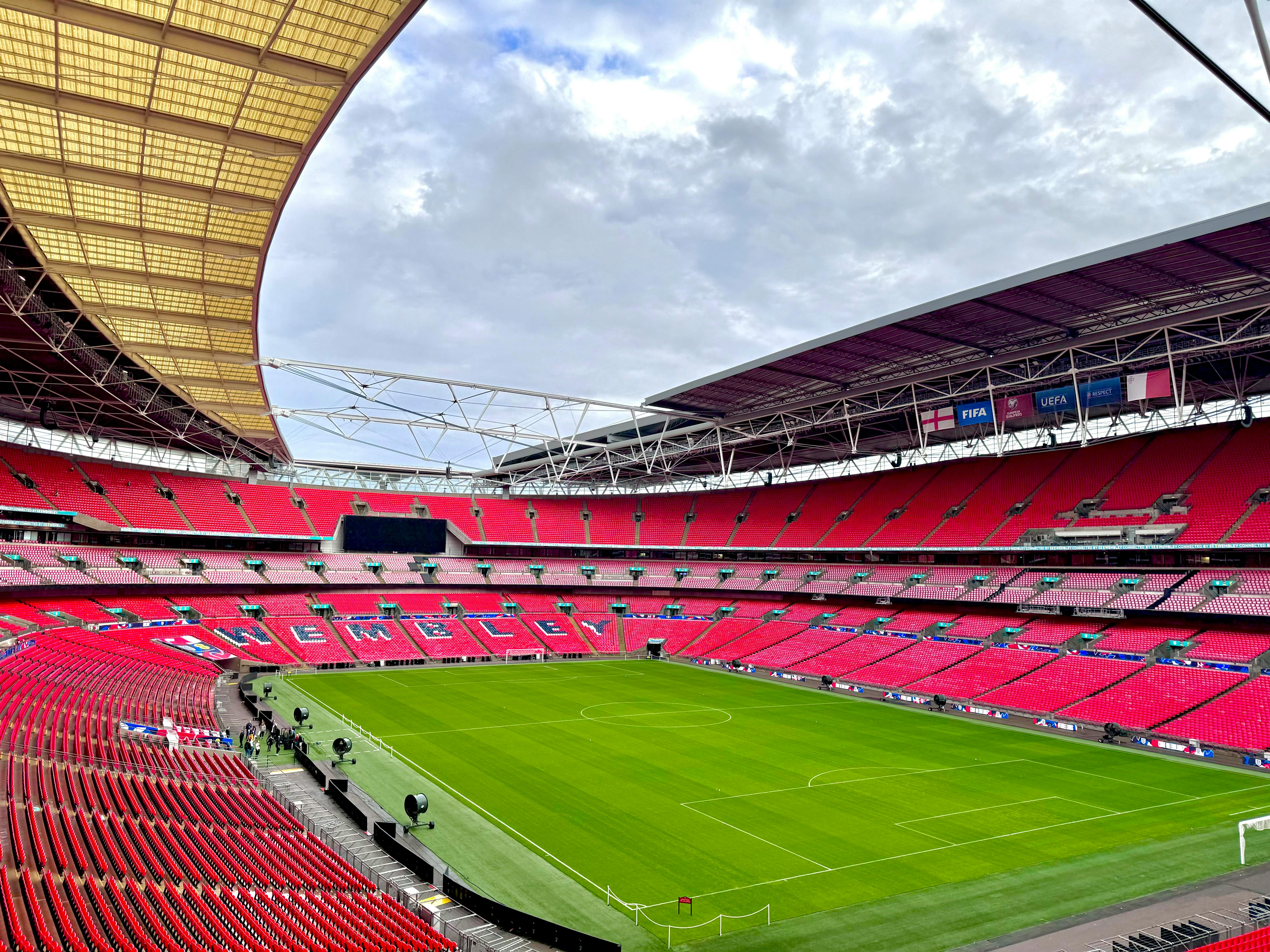Fifa: The Untold Story, Global Impact, and Football’s Future
Let me start with perhaps the single most provocative question in world football: Is Fifa the beating heart of global unity—or the source of so much of the sport’s darkness? If you’ve followed the game for more than a passing moment, you’ve probably felt both. I know I have. I’m constantly caught off guard by just how complex, controversial, and downright fascinating Fifa’s story truly is. Fascinating not only in the official histories, but in the ways people like us—fans, professionals, lifelong insiders—wrestle with its contradictions daily. Growing up, Fifa was almost mythical to me: a Swiss-based house of football, mysterious and powerful, responsible for the World Cup, yet curiously distant from the everyday joy of the Saturday game. I can’t count the number of debates I’ve had—over beer, post-match, online—about whether Fifa’s reach is ultimately a force for good. Turns out, it’s not a simple answer, and if you ask me today, I’ll give you a slightly different answer than I would have even a few years ago. Maybe that’s the point.
What Is Fifa, Really? (And Why Does It Matter?)
Alright—let’s not pretend: when most people say “Fifa,” they mean either a global football association or, for some, just the video game. But at its core, Fifa (Fédération Internationale de Football Association) is the international governing body for association football (that’s soccer, for those in the US), futsal, and beach soccer1. Founded in 1904, headquartered in Zurich, its job (at least in theory) is simple: enforce the rules, organize the biggest tournaments, grow the game globally. But scratch beneath the surface and you’ll find power struggles, jaw-dropping cash flows, and a complicated network of nearly every nation on earth.
Honestly, that sums it up. Most fans will never step foot in Fifa’s offices. Heck, most of us will never see the inside of any of its 211 member associations’ headquarters. And yet—every World Cup, every qualifying match, every tense debate over VAR technology and transfer rules traces, in some way, back to Fifa. From my experience working with grassroots clubs, the ripple effect of Fifa policy is constant, even if you rarely notice it at first.
A Brief But Honest History of Fifa
I’ll confess: I used to think Fifa history was dry, a long parade of old men in suits. It’s anything but. The organization was formed in 1904 by seven national associations—Belgium, Denmark, France, the Netherlands, Spain, Sweden, and Switzerland—mostly to stop British football from dominating the rest of the world2. Back then, football’s explosion was only just getting started, and Europe was its noisy epicenter. Early Fifa was broke, often ignored, and leaning on volunteers. In fact, for decades, the Fifa presidency was as much a diplomatic post as a seat of power. The real turning point? 1930: Uruguay hosts the first Fifa World Cup, forever linking Fifa’s fate to the planetary obsession with global football glory3.
- Started as a European “club,” expanded to every inhabited continent
- Grew with post-WWII decolonization (new football nations)
- Commercialized dramatically from the 1970s onward
- Entrenched political and cultural power by the 1980s
Historically, major Fifa moments parallel massive world events—wars, boycotts, breakthroughs. “Fifa as a mirror of world politics” isn’t just a cliché; it’s an analytical lens that reveals the true stakes of global sport (and why all those reforms, scandals, and media frenzies matter so much). In my view? You can’t really understand modern football—or the global ritual of fandom—without understanding Fifa. It’s that simple. Or perhaps, not so simple after all.
How Fifa Shaped (and Warped) World Football
In my own professional journey—coaching at the club level, consulting on grassroots development, and even liaising with FAs—I’ve seen first-hand how Fifa decisions trickle down (sometimes like a flood, sometimes like a drought). Here’s the paradox: Fifa gets credit for expanding the global game and, simultaneously, for concentrating its biggest benefits at the very top. Consider the Fifa Forward Program—launched in 2016, promising millions in development funding to every member nation4. Sounds brilliant, right? Yet implementation varies wildly. In some countries, it’s the single biggest source of football funding; in others, bureaucracy or corruption keeps that money from making a dent.
Fifa disbursed over $1.5 billion to member associations during the 2018–21 period, much of it earmarked for youth competitions, facilities, and coaching education. But audits reveal that up to a quarter remains untracked in some nations.
It’s easy to be cynical: When you hear “development funding,” you might think, “How much reaches the pitch?” I asked exactly that at a 2019 development seminar in Paris, and got as many different answers as there were administrators in the room. (Truth is, I’m not convinced any of them really knew.) That’s Fifa in a nutshell: high-level coordination, low-level variability. The grand ambitions—expanding women’s football, eradicating racism, democratizing access—sound noble. Reality is—more often than not—messy.
As of 2024, Fifa has 211 national associations, more than the United Nations’ 193 member states. Even microstates, non-sovereign territories, and tiny islands boast Fifa membership, proving its reach and influence goes beyond mere politics.
Source: 5
Financial Gravity: The Business of Modern Fifa
Let’s talk numbers, because—like it or not—money shapes these debates. Fifa’s revenue for the last four-year World Cup cycle? Over $7.5 billion6. The overwhelming majority (about 85%) comes from TV rights and sponsorships tied to the World Cup. But what’s left after organizational costs, payouts to associations, and the infamous “rainy day funds” set aside for future projects? Here’s a quick snapshot that might surprise you:
| Cycle | Total Revenue | Dev. Spending | Profit/Reserve |
|---|---|---|---|
| 2015–18 | $6.4B | $1.67B | $1.04B |
| 2019–22 | $7.5B | $1.9B | $2.5B |
It’s tempting to say that television is football at the Fifa level; sometimes, it feels that way. (I used to scoff at “TV money runs football” until I looked at the actual receipts.) Still, this scale brings stability—and temptations. If you believe the vision, global football would collapse without these billions. If you don’t, it’s just more evidence of unchecked power. Both are true, and neither is enough.
Controversies, Corruption, and Reckonings
Let me just say it honestly: no discussion of Fifa is worth anything without admitting the organization’s darker chapters. I remember the shockwaves I felt professionally—and as a fan—when the 2015 U.S. Department of Justice indictments of senior Fifa executives hit the news. Many of us expected drama, sure—but not the sprawling network of alleged kickbacks, bribes, and money laundering stretching back decades7. Suddenly, every headline was about Fifa’s “culture of corruption,” and not just in the anglosphere. Colleagues abroad told me stories that had never made Western news—regional associations quietly ignored practices that would never pass scrutiny in the corporate, regulated world. Does that invalidate Fifa’s mission? In my view, no. But it leaves a scar definitely still visible in 2024.
- 2015 Fifa corruption scandal exposed systemic bribery
- High-profile resignations: Sepp Blatter, Michel Platini, others
- Ongoing reform attempts—governance, transparency, term limits
- Continued skepticism from fans, media, and sponsors
Some days, I wonder—do the reforms matter, or is it all “business as usual”? Six years ago, I was much more optimistic about the impact of new compliance programs; lately, I find myself circling back: meaningful change has to start with cultural shift, not new manuals.

The World Cup Machine
Now, about the Fifa World Cup—this is where things get personal. I attended my first World Cup match in 2006. The electricity, the sense of the whole planet tuning in—no other event comes close. Fifa’s invention of the World Cup in 1930 was a stroke of genius (and luck), a global tournament that grew to be the biggest sporting event on Earth. For Fifa, it’s both crown jewel and revenue engine. But for fans, it’s closer to a pilgrimage. And honestly, the World Cup is the closest any sporting organization has come to creating genuine, borderless, planet-wide togetherness. A friend from Cameroon once told me, “For one month, we’re all football nations, not just people in a country.” Hard to disagree.
Still, it’s impossible to separate the magic from the machinery. Every decision about hosts, tournament expansion, and commercial partners is driven by a mix of grand vision and cold economics. The now-controversial choices—Qatar 2022, Russia 2018—divide fans and echo in boardrooms, living rooms, and newsrooms alike.
Fifa’s push to expand the men’s World Cup to 48 teams (starting 2026) and similar moves for women’s and youth tournaments comes with huge costs and benefits. Here’s a quick breakdown:
| Edition | Teams | Estimated Revenue | Broadcast Markets |
|---|---|---|---|
| Brazil 2014 | 32 | $4.8B | 214 |
| Russia 2018 | 32 | $5.4B | 220 |
| Qatar 2022 | 32 | $7.5B | 224 |
| USA/Canada/Mexico 2026* | 48 | $10B+ | 230* |
*Estimated. Source: Fifa financial reports, ESPN analysis8
Timeline: The Big Turning Points
I’m going to step back for a second and look at the whole history as a timeline. Why? Because context is everything. Here are the defining Fifa moments (from my perspective—your mileage may vary):
- 1904: Fifa founded; football’s first attempt at global rules
- 1930: First World Cup in Uruguay; launches “planetary sporting event” model
- 1974–1998: João Havelange and later Sepp Blatter globalize and commercialize Fifa, partnering with sponsors (notably Adidas, Coca-Cola)
- 2004: 100th anniversary, peak of Blatter-era growth and scandal shadows
- 2010: South Africa hosts, marking transformation of World Cup into “global development” platform
- 2015: DOJ indicts Fifa officials; massive governance reckoning
- 2018–2022: “Geopolitical World Cups”—Russia and Qatar host amid protests, boycotts
- 2026 onwards: Unprecedented expansion—debates about mission, money, and meaning
The thing that really strikes me? History isn’t just made in Zurich or Paris; it’s made every time a kid kicks a ball on a new patch of grass in Delhi, Lagos, or Atlanta—moments made possible (or not) by Fifa’s rules, funding, and politics.
Email your thoughts—let’s compare perspectives.
There’s real power in pausing to reflect. Too often we see only today’s headlines and forget the span of change (good, bad, seismic) that has shaped the game. Frankly, my attitude evolves constantly; what outraged me last decade, I’ve sometimes come to see as progress in disguise. And vice versa.
Where Fifa Goes From Here
If I’ve learned one thing from two decades in and around football, it’s this: Fifa’s evolution won’t resemble its past. In the 2020s and beyond, two forces—commercialization and global activism—will fight for the heart of world football. We’ve already seen the signs: Fifa’s push for more women’s and youth tournaments, breathtaking new tech (semi-automated offsides, artificial intelligence in match analysis), and major expansion into the USA, China, and India. Simultaneously, fans and players are demanding greater accountability, ethical reform, and a renewed sense of the sport’s cultural soul.
It’s not just wishful thinking—young fans, especially, are less loyal to institutions and more fiercely tribal about authenticity and values. Sponsors, for their part, are already pulling back when Fifa’s image sours. I recently discussed future scenarios with a former Fifa committee member, who was blunt: “Fifa either adapts, or it’s marginalized. There’s no middle path anymore.”
| Challenge/Opportunity | Fifa’s Recent Move | What’s at Stake? |
|---|---|---|
| Women’s Football | New tournaments, more slots, prize increases | Legitimacy, growth, gender equity |
| Tech Adoption | VAR, offside automation, digital fan experience | Game integrity, global reach, fan engagement |
| Governance Reform | Term limits, compliance overhaul | Trust, sponsor retention, authentic change |
Is it possible for Fifa to truly serve football’s global community? I’m cautiously hopeful. Then again, I’ve seen enough cycles of promises and setbacks to recognize that the only constant in football—on the pitch or off—is change.
Over to you: What should the next decade of Fifa look like? More tournaments? Stricter oversight? New voices at the table? I’ll be wrestling with those same questions long after you’ve closed this article—and perhaps, so will you.
Actionable Insights & Your Role
- Read up on recent Fifa reforms—don’t take news headlines at face value
- Support local football initiatives: your dollars and hours make a real difference
- Demand transparency and inclusion (reach out to national FAs, use your vote/voice in club elections)
References & Further Reading
Sources Cited


